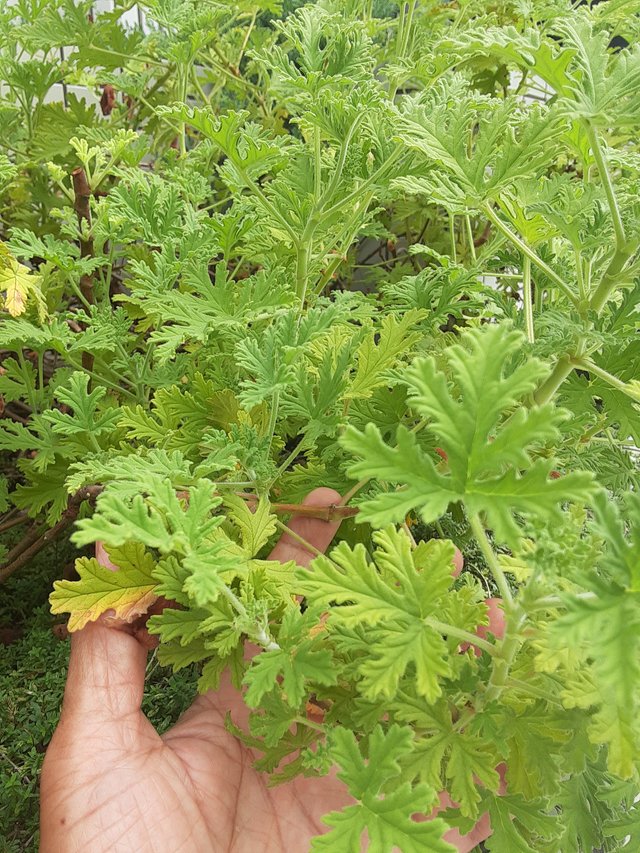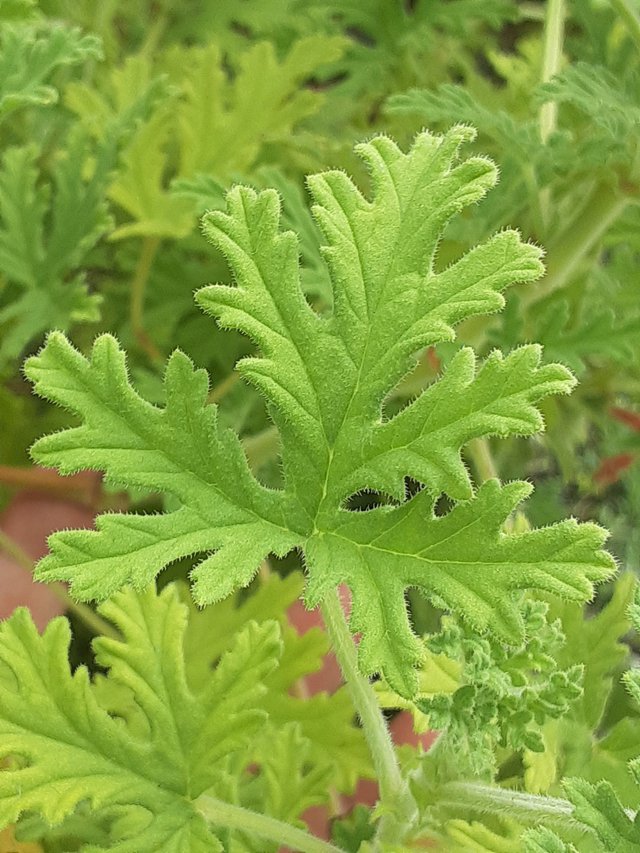
Pelargonium graveolens, commonly known as the scented geranium, is a flowering plant in the Geraniaceae family. It is native to South Africa and is widely cultivated for its fragrant leaves, which are used in aromatherapy, perfumery, and culinary applications.
The leaves of P. graveolens are typically lobed and have a distinctive, often sweet, fragrance. This scent is due to the presence of essential oils, including citronellol, geraniol, and linalool. The specific fragrance varies depending on the cultivar, with some having a rose-like scent, while others may smell more like lemon, peppermint, or even pine.
The leaves are usually green, but some varieties may have variegated patterns or even reddish hues. They are covered in fine hairs, which help to trap and release the aromatic compounds. The hairs also give the leaves a soft, velvety texture.

Pelargonium graveolens leaves can be used in various ways. They can be crushed and inhaled to experience their fragrance directly, or they can be added to potpourris or sachets. The leaves can also be used to make herbal teas or infused oils. In cooking, they can be used to flavor desserts, jams, and jellies.
In aromatherapy, P. graveolens leaves are believed to have various therapeutic properties. They are thought to help reduce stress, anxiety, and depression. They may also have antibacterial and antifungal properties. However, it is important to note that more research is needed to fully understand the potential benefits of using P. graveolens leaves in aromatherapy.
Overall, Pelargonium graveolens is a versatile and fragrant plant that has been used for centuries for its medicinal and aromatic properties. Its leaves are a valuable resource for both traditional and modern applications.
Ref.:
 |  |
Upvoted! Thank you for supporting witness @jswit.
Downvoting a post can decrease pending rewards and make it less visible. Common reasons:
Submit